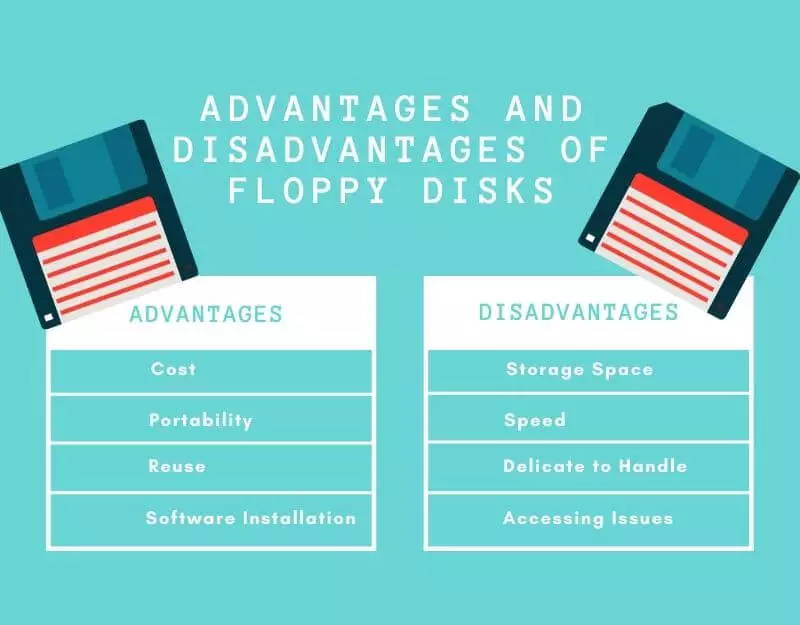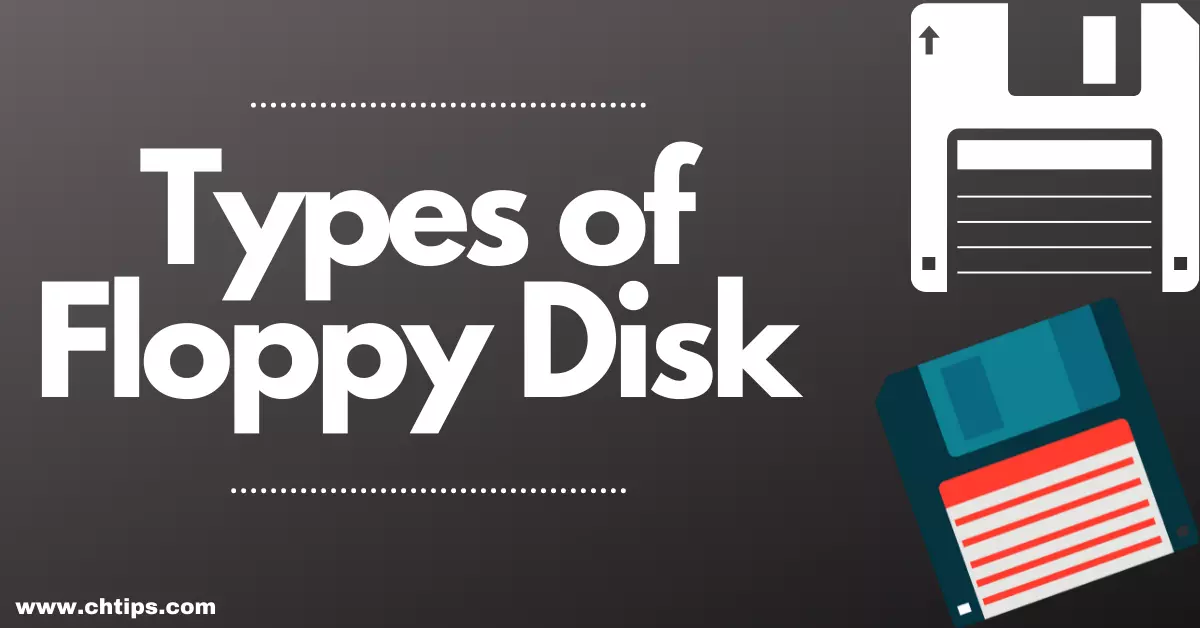In this post, we are going to learn and discuss what are the different types of floppy disks in computer systems & their definition, meaning with examples.
The floppy disks are obsolete nowadays. They are old fashion external storage devices that are not as popular as before also they are unable to store huge amounts of data due to their low storage capacity.
They are not reliable like hard disk drives, pen drives, zip drives, SSD, CDs, DVDs, Memory chips, etc.
Therefore floppy diskettes have been easily replaced by these excellent external storage mediums.
The Engineer Alan Shugart from IBM invented Floppy Disk.
What is Floppy Disk and its Type?
The Floppy disk or diskettes are considered to be an external storage medium that is used to store data and information permanently.
In the year 1971, IBM launched a floppy disk.
The floppy disk was one of the most popular external storage devices of its time.
Floppy disks are called “memory disks” they were 8-inch flexible plastic disks coated with magnetic iron oxide.
To read and write data and information into floppy disk users need to have a floppy disk drive {FDD}.
The floppy disks are not capable of holding and storing a high volume of data and information, therefore, the need for such external storage devices which can store huge data was needed and hence CDs, DVDs, and HDD were introduced in the market which gained huge popularity.
These floppy disks are highly portable when compared to hard disks.
The floppy disk was not that reliable as they were very sensitive to heat, temperature, and dust.
The data present in the floppy used to get damaged and corrupt easily therefore their use was limited.
Types of Floppy Disks
The floppy disks are generally categorized into three different types which are mentioned below.
- 8-inch Drive
- 5 ¼ -Inch Drive
- 3 ½ -Inch Drive
- Zip Drive
8- Inch Drive
The 8-inch floppy disks were available in the market in the 1970s- 1980s.
Firstly they were designed and developed for reading the data and information available on the diskette but later the need to read/write was found necessary therefore the new updated version of the floppy disk was manufactured.
They were capable of performing both the tasks and operations with ease.
5 ¼ -Inch Drive
The 5 1/4 inch floppy disk was intensively used in personal computers. They were introduced in the market in the 1980s and at that time they were quite expensive.
They had a storage capacity of 160 kb which was increased to 360 kB and later to 1.22 MB.
They are well known for their portability and hence it was very easy to carry them from one location to another.
After some modification and up-gradations, the disks were capable to read the data from both sides {double-sided}.
The 51/4 inch floppy disk are also called “MINI FLOPPY”.
3 ½ -Inch Drive
The 3.5-inch floppy disks were considered to be more advanced and modern floppy disks. They are double-density floppy disks.
These disks are quite compact in size compared to their counterparts.
They were first introduced in the market by IBM {International Business Machine} in the year 1984. Their storage capacity was 1.44 MB.They were capable of storing data of 740 kB in double density and 1.40 MB in high density.
Micro Floppy is 3.5 inches in size.
Zip Drive
The Zip Drives were designed and developed by Iomega Corporation. They were quite expensive therefore their use was limited and hence not that popular.
Floppy Disks are further divided into a few more types.
- DSDD (Double Sided Double Density) – 360 KB
- DSHD (Double Sided High Density) – 1.2 MB
- DSDD (Double Sided Double Density) – 720 KB
- DSHD (Double Sided High Density) – 1.44 MB
- DSED (Double Sided Extra High Density) – 2.88 MB
- SSSD (Single Sided Single Density)- 360 KB
- SSDD (Single Sided Double Density) – 180 KB
- DSSD (Double Sided Single Density) – 180 KB
Related Articles
- Advantages and Disadvantages of Microcontroller
- Advantages and Disadvantages of Magnetic Disk
- Advantages and Disadvantages of Optical Disk
- Advantages and Disadvantages of Microprocessor
- 20 Advantages and Disadvantages of Mobile Phones
- Advantages and Disadvantages of CRT Monitors
- Advantages and Disadvantages of CCTV Cameras
- Advantages and Disadvantages of Blu-Ray Disk
- Advantages and Disadvantages of Fifth Generations of Computer System
- Advantages and Disadvantages of Floppy Disks
- Advantages and Disadvantages of Speakers
- 13 Advantages and Disadvantages of Keyboards in Computer
- 11 Differences Between Floppy Disk and Hard Disk
- 8+ Differences Between Mouse and TrackBall
- Computer Basic Tutorials

Advantages of Floppy Disk
- Cost
- Portability
- Reuse
- Reliable
- Security
Disadvantages of Floppy Disk
- Storage
- Access Issues
- Speed
- Delicate to Handle
- Recovery Issues
Get In Touch
I have also written and compiled some articles on computers and telecommunications, and please go through them.
I hope you will like reading it.
I hope that all the questions and queries related to what are the Different Types of Floppy disks in computers have been answered here.
If you have any questions related to the What is Floppy Disk in Computer.
Don’t hesitate to contact me, and if you need to add, remove, or update anything from the article, please let me know in the comment section or via email.
I will be more than happy to update the article. I am always ready to correct myself.
I was hoping you could share this article with your friends and colleagues; this motivates me to write more on related topics.
!!! Thank You !!!
